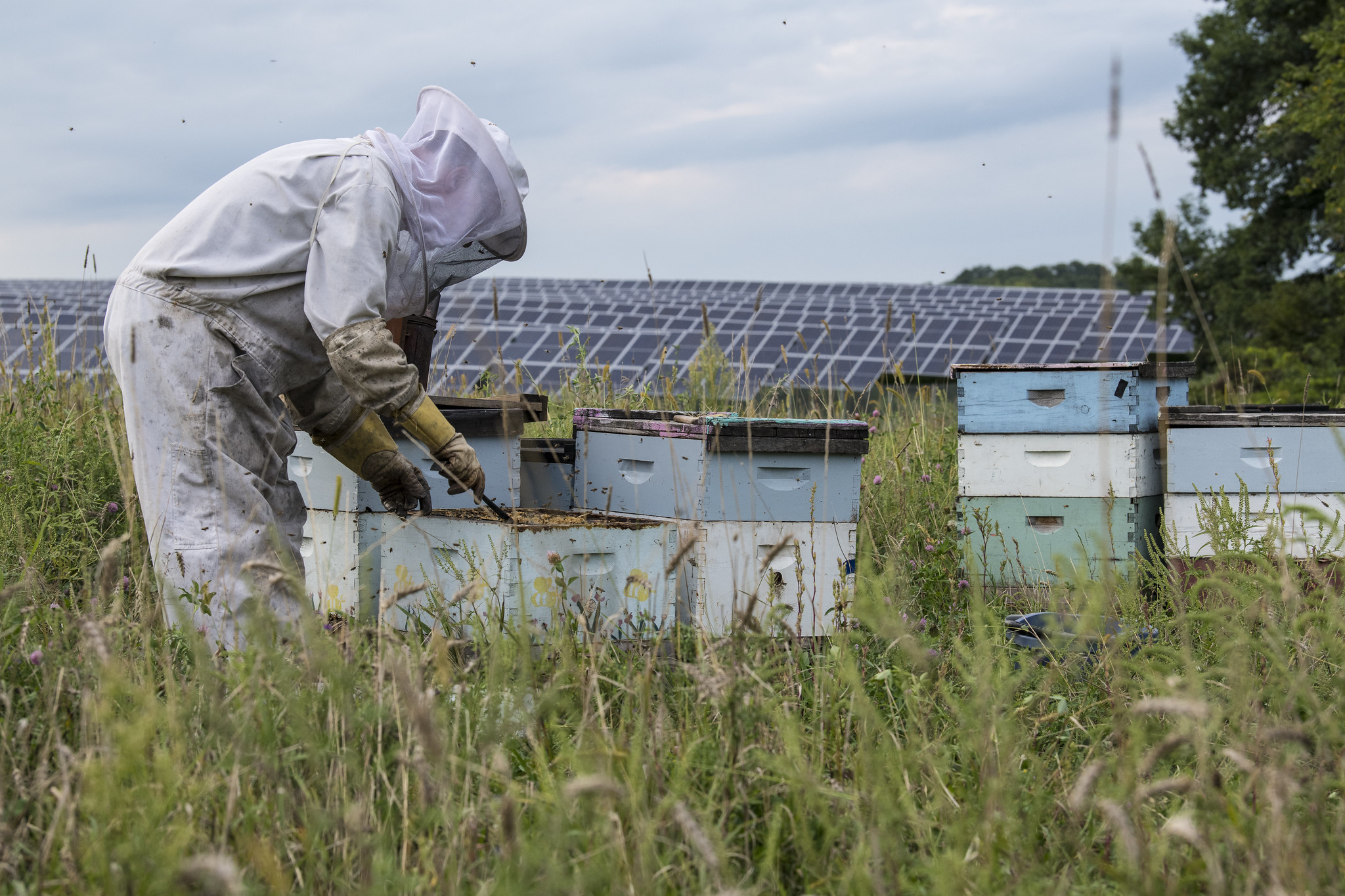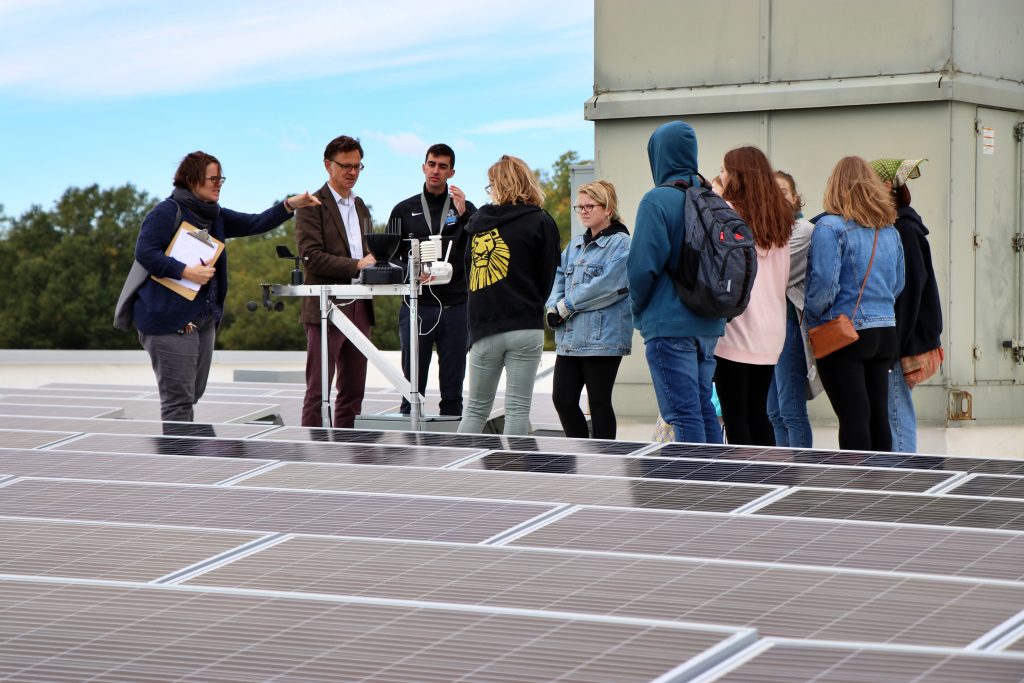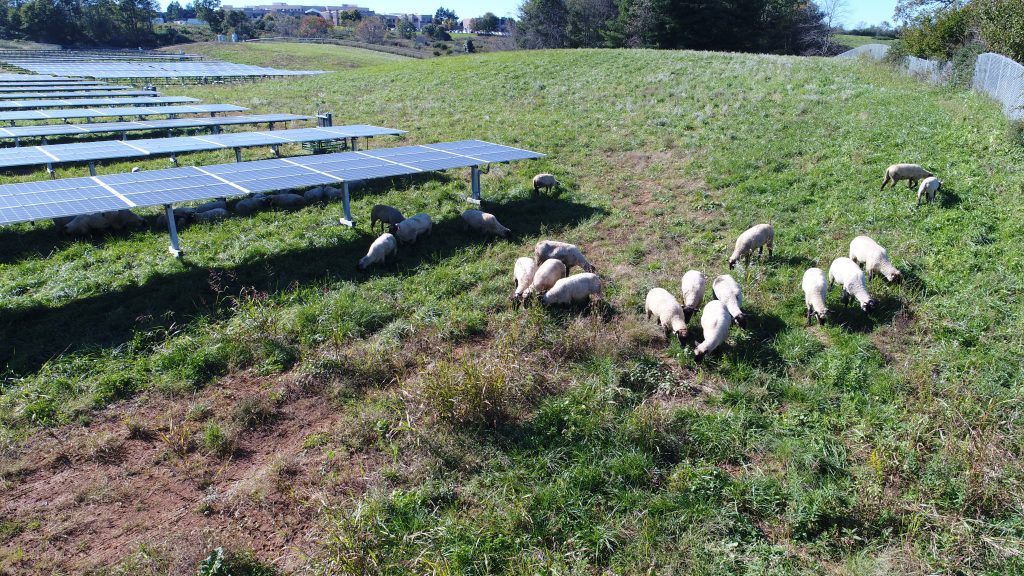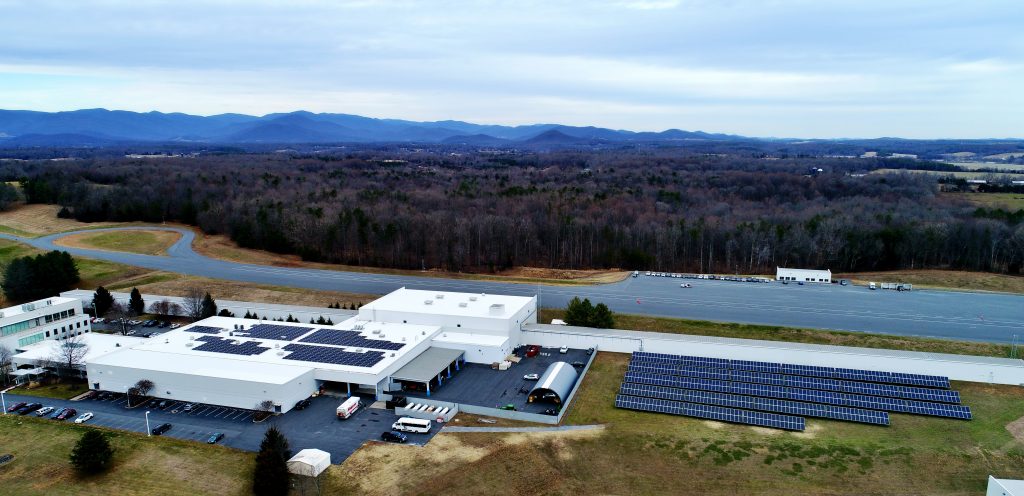Aug 13, 2020
Pollinator-friendly Habitats: A No-Brainer for Solar Farms
Solar energy plays a pivotal role in building a holistically sustainable energy economy. Still, with the rise of ground-mounted solar projects, ecological well being must be a top priority in the planning process. For these systems, pollinator-smart design can help enhance their environmental integrity.

For more related content on environmental and educational topics, check out our Throwing Solar Shade program and blog post on Solar Sheep.
Ecological harms of business-as-usual practices
As a growing human population continues to place considerable strain on our natural resources, the agriculture and fossil fuel industries are leading contributors in global greenhouse gas emissions. A major part of this concern is the growing land use by these industries, from cattle ranching to oil drilling.
As a result of such human activity, undisturbed natural habitats are steadily disappearing. An estimated half a million (about 9%) of known land species are threatened with impending extinction due to habitat loss (United Nations). Chiefly among these are pollinator species such as bees, butterflies, birds, and bats.
Nearly half of all bee species are in decline, while butterfly populations have dropped by 68% in the last twenty years. Plus, natural pollinators are estimated to provide as much as $577 billion in food production (Scientific American; FAO). This poses a problem for the agriculture industry as well as integrity of ecosystems on which we depend.
The need for proactive environmental leadership
Solar energy provides innovative solutions to diminish fossil fuel dependence and make land development less impactful in the process. While greenhouse gas emissions from solar panels are undoubtedly lower, the vast land required for ground-mounted solar is a growing, widely acknowledged concern.
Indeed, the intensive land use practices of industrial agriculture and fossil fuel extraction are far more harmful to surrounding environments. However, any industry requiring large amounts of land on which to operate will inevitably disturb and fragment nearby ecosystems. With the solar energy industry projected to require 3 million acres of land by 2030 and double that by 2050, it must demonstrate environmental leadership and over its non-renewable counterparts. In order to accomplish this, ecological wellbeing needs to become a top priority (Utility Dive).
How can solar farms help pollinator species?
One of the most effective ways to mitigate solar farms’ environmental impacts is pollinator-friendly design, also known as “pollinator-smart habitats” or similar variations (DCR). Most solar farms today lay turf grass or gravel underneath the solar panels. Conversely, a pollinator-friendly approach involves planting native, preferably shade-tolerant wildflowers and grasses. They should also be low-growing as to not shade any of the panels (Scientific American).

Native species provide numerous advantages over non-native plants (and especially gravel). These include better stormwater control, reduced erosion, and most importantly, higher attraction to pollinators (GUND Institute). Plus, a more varied mix of native plants will attract a more diverse array of pollinator species (Scientific American).
Pollinator-smart habitats can also enhance biodiversity by connecting ecosystems that would be fragmented and weakened by land development (Utility Dive). This connectivity also benefits nearby farms through boosting crop productivity and reducing reliance on external bee pollination services (Scientific American).
Additionally, native plants help maintain cooler surface temperatures, which can counteract the photovoltaic heat island effect. This occurs when large solar arrays absorb the sun’s energy and radiate it back out as heat (Scientific American).
Last but not least, one of the most important environmental benefits of native plants is their capacity to sequester carbon. This allows solar energy systems to move even closer to being carbon-neutral, if not carbon negative (DCR).
Opportunities for community engagement
All of these benefits make for fantastic educational opportunities when companies partner with local schools. Secure Futures has done exactly that with its Throwing Solar Shade program. Partnering with the Richmond City and Augusta County Public Schools, students can learn about the importance role of renewable energy. An integral part of that is learning about ecological resilience and how natural systems respond to human activity. Pollinator-friendly design melds all of this together, creating a real-life example of how the solar industry is addressing environmental issues.

Pollinator-smart solar farms can help mitigate many of the challenges that utility solar often faces from surrounding communities and stakeholders about it being intrusive, an eye sore, and otherwise disruptive to what may have been a pristine natural environment. Learning opportunities can arise from similar mistakes in the wind industry, which has sometimes provoked forces of opposition in communities. A such, pollinator-friendly design can help the solar industry foster socially and environmentally sustainable systems (Utility Dive).
Pollinator-smart regulation: what we know so far
In Virginia, the Department of Environmental Quality (DEQ) and the Department of Conservation and Recreation (DCR) regulate pollinator-friendly design standards. Administering Pollinator-Smart certifications for new and existing solar sites, scoring is based on a number of criteria. These include how well a site provides pollinator services, biodiversity and habitat enhancement, carbon sequestration, erosion and sediment control, and reduced vegetation maintenance over time.
For those interested in learning about the best mix of native vegetation to plant at a pollinator-friendly site, the DCR has a Virginia Solar Site Native Plant Finder website for this purpose. Additionally, the Xerces Society and the National Renewable Energy Laboratory provide resources for pollinator-smart site planning. These cover different regions of the U.S. and provide in-depth scientific research on how these systems should be effectively implemented.
Financially, implementing pollinator vegetation may prove to be more cost-effective in the long run than the current solar farm model. While data is not widely available on the long-term costs of this new system, experts generally agree that they could reduce operating costs over the lifetime of a solar farm given the different materials and upkeep involved (Utility Dive). It may be more expensive up front to acquire and plant native vegetation than putting down normal turf grass or gravel. However, there is very little upkeep required going forward in the form of mowing, pesticide use, stormwater management, and erosion control (Scientific American).
Another creative approach which complements pollinator-friendly systems is the use of “solar sheep” for grazing underneath and around the panels. Doubling solar farm property as a sheep pasture can nearly eliminate any remaining need for regular mowing and herbicides application. Plus, sheep are short enough to not shade the panels or chew at electrical systems like other livestock would.

Solar sheep also enrich the community impact of solar farms. They can allow for partnerships with local farmers and can reduce the total demand for agricultural land. This is contrary to traditional utility solar, which often takes land away from agricultural use. For more information on this, check out our blog post 8 Reasons Why the World Needs Solar Sheep.
Secure Futures’ role in pollinator-friendly design
In choosing to become certified as a B corporation, Secure Futures recognizes the inherent value of environmental stewardship, and commit to upholding a triple bottom line approach to our business, considering the ecological, social, and economic impacts of our work. For these reasons, Secure Futures always opts to utilize as much rooftop space as possible for our projects. At the same time, we recognize that we have the potential to offset large amounts of unsustainable energy production by utilizing otherwise unusable land for ground-mounted arrays.

With this mindset, we are always seeking out new ways to further enhance the integrity of the natural environment with our various projects. If ground-mounted solar arrays are a reasonable option for our customers, we plan to encourage the use of pollinator-friendly design as much as possible, as well as promote these practices to our partners and fellow businesses in the solar industry.
So… how much does pollinator-smart design actually help in the grand scheme of things?
Pollinator-friendly design is not a be all end all solution. After all, it still pales in comparison to leaving a previously pristine landscape undisturbed. Still, between displacing fossil fuels and enhancing ecological resilience compared to traditional ground-mounted systems, it can be a very important component in creating more sustainable energy production systems. The reality is, as long as solar continues to grow as a viable part of our energy grid, pollinator-friendly design must serve as an integral part of the careful and judicious implementation of ground-mounted solar arrays.
Make This Your Year to Go Solar
Find out what it would take for your college, school, hospital or business to get solar on-site with no upfront capital investment and money savings every month.